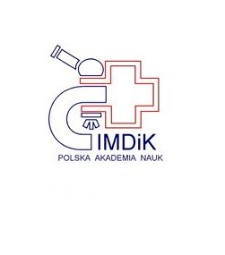- Wyszukaj w całym Repozytorium
- Piśmiennictwo i mapy
- Archeologia
- Baza Młynów
- Nauki przyrodnicze
Wyszukiwanie zaawansowane
Wyszukiwanie zaawansowane
Wyszukiwanie zaawansowane
Wyszukiwanie zaawansowane
Wyszukiwanie zaawansowane

Obiekt
Tytuł: ZAGADNIENIE ZMIENNOŚCI MORFOLOGICZNEJ TKANKI GLEJOWEJ HODOWANEJ IN VITRO
Twórca:
Kraśnicka, Zuzanna ; Mossakowski, Mirosław Jan (1929–2001)
Data wydania/powstania:
Typ zasobu:
Inny tytuł:
THE PROBLEM OF MORPHOLOGIC VARIATION OF GLIAL TISSUE GROWN IN VITRO
Współtwórca:
Polska Akademia Nauk. Zakład Neuropatologii
Wydawca:
Państwowy Zakład Wydawnictw Lekarskich
Miejsce wydania:
Typ obiektu:
Abstrakt:
Podstawowym zagadnieniem metodycznym wcześniejszych prac był problem różnicowania w hodowli tkankowej poszczególnych typów komórek gle¬jowych. Istotnych czynników różnicujących dostarcza badanie hodowli przy pomocy kontrastu fazowego z równoczesnym zastosowaniem mi¬kro kinematografii. Technika ta pozwala na spostrzeganie typowych dla poszczególnych rodzajów gleju ruchów komórkowych. Mimo istniejących róż¬nic co do diagnostycznej wartości ruchów pulsacyjnych i ich swoistości dla gleju skąpo drzewiastego (Wolfgrami Rose,Bergi Kallen), jest rzeczą niewątpliwą, że technika ta zapewnia największe i najpewniejsze możliwości różnicowania poszczególnych typów komórek glejowych. Jest to szczególnie ważne wobec zmienności form morfologicznych ży¬wego gleju. Zastosowanie modelu hodowli tkanki do badań histochemicznych (Yonezawaiwsp.1962,Friede1964,Mossakowski iwsp.1965 ) stawia wobec konieczności różnicowania komórek glejowych na materiale utrwalonym stwarzając potrzebę posługiwania się kryteriami czysto mor-fologicznymi. Istotne jest również ustalenie, czy istnieje i jak się kształtuje zmienność morfologiczna komórek glejowych w czasie oraz w zależ¬ności od stosowanego materiału zwierzęcego. Wymienione zagadnienia stanowią przedmiot obecnego doniesienia.
Czasopismo/Seria/cykl:
Tom:
Zeszyt:
Strona pocz.:
Strona końc.:
Szczegółowy typ zasobu:
Format:
Identyfikator zasobu:
Język:
Język streszczenia:
Prawa:
Licencja Creative Commons Uznanie autorstwa 4.0
Zasady wykorzystania:
Zasób chroniony prawem autorskim. [CC BY 4.0 Międzynarodowe] Korzystanie dozwolone zgodnie z licencją Creative Commons Uznanie autorstwa 4.0, której pełne postanowienia dostępne są pod adresem: ; -
Digitalizacja:
Instytut Medycyny Doświadczalnej i Klinicznej im. M. Mossakowskiego Polskiej Akademii Nauk
Lokalizacja oryginału:
Biblioteka Instytutu Medycyny Doświadczalnej i Klinicznej im. M. Mossakowskiego PAN
Dofinansowane ze środków:
Dostęp:
Kolekcje, do których przypisany jest obiekt:
- Repozytorium Cyfrowe Instytutów Naukowych > Kolekcje Partnerów > Instytut Medycyny Doświadczalnej i Klinicznej PAN > Publikacje pracowników IMDik PAN
- Repozytorium Cyfrowe Instytutów Naukowych > Piśmiennictwo > Czasopisma/Artykuły
Data ostatniej modyfikacji:
1 lut 2022
Data dodania obiektu:
20 mar 2019
Liczba pobrań / odtworzeń:
295
Wszystkie dostępne wersje tego obiektu:
https://rcin.org.pl./publication/90945
Wyświetl opis w formacie RDF:
Wyświetl opis w formacie RDFa:
Wyświetl opis w formacie OAI-PMH:
| Nazwa wydania | Data |
|---|---|
| Kraśnicka, Zuzanna, 1965, ZAGADNIENIE ZMIENNOŚCI MORFOLOGICZNEJ TKANKI GLEJOWEJ HODOWANEJ IN VITRO | 1 lut 2022 |
Obiekty Podobne
Kraśnicka, Zuzanna Renkawek, Krystyna Mossakowski, Mirosław Jan (1929–2001)
Mossakowski, Mirosław Jan (1929–2001) Kraśnicka, Zuzanna Renkawek, Krystyna
Renkawek, Krystyna Mossakowski, Mirosław Jan (1929–2001)
Kraśnicka, Zuzanna Mossakowski, Mirosław Jan (1929–2001) Renkawek, Krystyna
Magdalena Radkowska-Walkowicz
Gargaś, Justyna Magdalena
Bojarczuk, Krystyna
Kanigowski, Dominik

 INSTYTUT ARCHEOLOGII I ETNOLOGII POLSKIEJ AKADEMII NAUK
INSTYTUT ARCHEOLOGII I ETNOLOGII POLSKIEJ AKADEMII NAUK
 INSTYTUT BADAŃ LITERACKICH POLSKIEJ AKADEMII NAUK
INSTYTUT BADAŃ LITERACKICH POLSKIEJ AKADEMII NAUK
 INSTYTUT BADAWCZY LEŚNICTWA
INSTYTUT BADAWCZY LEŚNICTWA
 INSTYTUT BIOLOGII DOŚWIADCZALNEJ IM. MARCELEGO NENCKIEGO POLSKIEJ AKADEMII NAUK
INSTYTUT BIOLOGII DOŚWIADCZALNEJ IM. MARCELEGO NENCKIEGO POLSKIEJ AKADEMII NAUK
 INSTYTUT BIOLOGII SSAKÓW POLSKIEJ AKADEMII NAUK
INSTYTUT BIOLOGII SSAKÓW POLSKIEJ AKADEMII NAUK
 INSTYTUT CHEMII FIZYCZNEJ PAN
INSTYTUT CHEMII FIZYCZNEJ PAN
 INSTYTUT CHEMII ORGANICZNEJ PAN
INSTYTUT CHEMII ORGANICZNEJ PAN
 INSTYTUT FILOZOFII I SOCJOLOGII PAN
INSTYTUT FILOZOFII I SOCJOLOGII PAN
 INSTYTUT GEOGRAFII I PRZESTRZENNEGO ZAGOSPODAROWANIA PAN
INSTYTUT GEOGRAFII I PRZESTRZENNEGO ZAGOSPODAROWANIA PAN
 INSTYTUT HISTORII im. TADEUSZA MANTEUFFLA POLSKIEJ AKADEMII NAUK
INSTYTUT HISTORII im. TADEUSZA MANTEUFFLA POLSKIEJ AKADEMII NAUK
 INSTYTUT JĘZYKA POLSKIEGO POLSKIEJ AKADEMII NAUK
INSTYTUT JĘZYKA POLSKIEGO POLSKIEJ AKADEMII NAUK
 INSTYTUT MATEMATYCZNY PAN
INSTYTUT MATEMATYCZNY PAN
 INSTYTUT MEDYCYNY DOŚWIADCZALNEJ I KLINICZNEJ IM.MIROSŁAWA MOSSAKOWSKIEGO POLSKIEJ AKADEMII NAUK
INSTYTUT MEDYCYNY DOŚWIADCZALNEJ I KLINICZNEJ IM.MIROSŁAWA MOSSAKOWSKIEGO POLSKIEJ AKADEMII NAUK
 INSTYTUT PODSTAWOWYCH PROBLEMÓW TECHNIKI PAN
INSTYTUT PODSTAWOWYCH PROBLEMÓW TECHNIKI PAN
 INSTYTUT SLAWISTYKI PAN
INSTYTUT SLAWISTYKI PAN
 SIEĆ BADAWCZA ŁUKASIEWICZ - INSTYTUT TECHNOLOGII MATERIAŁÓW ELEKTRONICZNYCH
SIEĆ BADAWCZA ŁUKASIEWICZ - INSTYTUT TECHNOLOGII MATERIAŁÓW ELEKTRONICZNYCH
 MUZEUM I INSTYTUT ZOOLOGII POLSKIEJ AKADEMII NAUK
MUZEUM I INSTYTUT ZOOLOGII POLSKIEJ AKADEMII NAUK
 INSTYTUT BADAŃ SYSTEMOWYCH PAN
INSTYTUT BADAŃ SYSTEMOWYCH PAN
 INSTYTUT BOTANIKI IM. WŁADYSŁAWA SZAFERA POLSKIEJ AKADEMII NAUK
INSTYTUT BOTANIKI IM. WŁADYSŁAWA SZAFERA POLSKIEJ AKADEMII NAUK




































